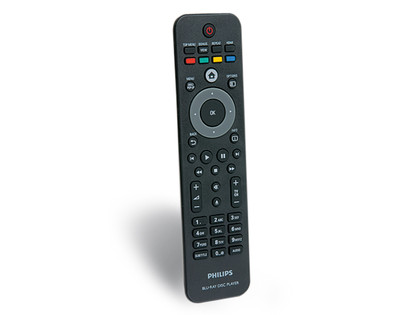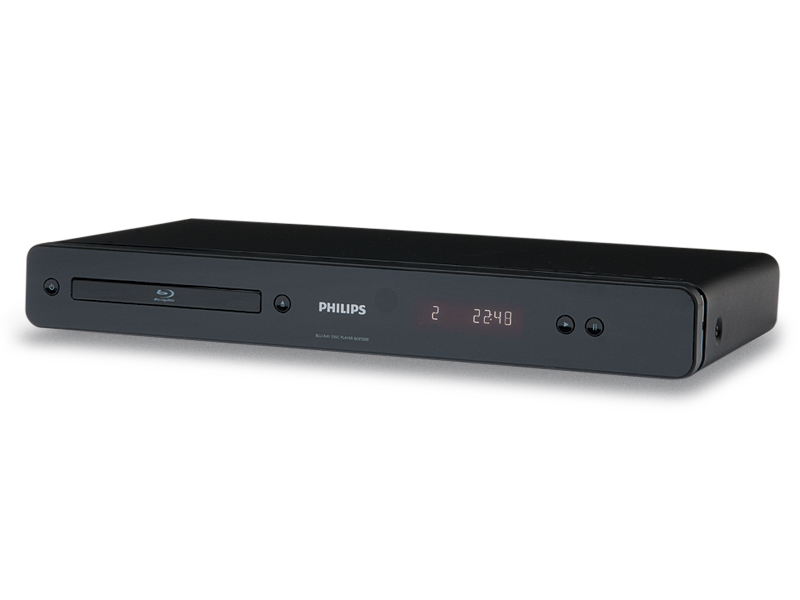TechRadar Verdict
Similarly priced machines just outgun it on features, but this good value deck triumphs on pure high-definition detail
Pros
- +
Connects to broadband instantly
- +
High detail
- +
Excellent onscreen menus
Cons
- -
Some judder
- -
BD Live needs USB stick
- -
No playback from USB port
Why you can trust TechRadar
While the first wave of Blu-ray players offered pin-sharp HD and little else, Philips' debut budget player is loaded with features that even stretch to the downloading of disc extras from BD Live. Given the outstandingly low price, the sleek, gloss black fascia and a hood that hides the disc tray, there's little to detract from its excellent value high-definition pictures.
Features
It may be a budget player, but the increasingly entertaining BD Live service is catered for, albeit in a slightly cumbersome manner.
The BDP3000 can stream content from all the major BD Live portals, but it doesn't have any onboard space for storing trailers, director's commentaries and suchlike. So the USB 2.0 port on the rear is crucial; it must be fitted with a memory stick of at least 2GB for the BD Live functions to work. All downloaded content is then stored directly to the stick, which does protrude from the rear of the admittedly slim machine.
Unlike Panasonic's Blu-ray decks that include widgets to access the brand's VieraCast service, Philips' similar NetTV feature – which can be found on its high-end TVs – isn't included on the BDP3000, or on any of the brand's Blu-ray range.
In practice these omissions won't be a major issue for most users looking to experiment with BD Live, though it does seem a little Scrooge-like on the part of Philips.
The same can't be said for the deck's ports. As well as Ethernet and USB, the rear of the BDP3000 sports an HDMI output, component video out, composite video, digital coaxial audio and a set of left/right phonos for analogue stereo.
Sign up for breaking news, reviews, opinion, top tech deals, and more.

Throw in some anti-judder 1080/24p technology, some DVD upscaling and compatibility with Dolby TrueHD 7.1 surround sound and the BDP3000 hasn't got much to apologise for.
Ease of use
A lot of thought has gone into how the user interacts with the BDP3000. Its set-up menu is simple and, along with attractive icons that grace the screen during viewing, helps make the player a joy to use.
It's also worth mentioning that while there's no way of connecting to broadband wirelessly, getting BD Live to work on the BDP3000 is simpler here than we've ever seen before; it's literally plug 'n' play.
The fact that a USB memory stick must be bought to get the BDP3000 to connect is a shame, doubly so because the player can't read any kind of digital media files via USB. It could do with an extra port on the front panel, especially with a lot of us now watching video and playing MP3 music through our home cinema systems.
However, it can play digital media files stored on disc, including MP3 music, JPEG photos and DivX, AVC-HD and WMV video files. But it won't play MOV, MPEG4, WMV HD, MKV or DivX HD files, the latter of which Samsung's budget Blu-ray decks can cope with.
Best of all, this digital file trickery can be accessed via attractive software that's a cinch to use.

That's partly down to the excellent remote control, which is modelled on the brand's high-end TV handsets and differs only in build quality. No matter; uncluttered and as easy to use as it is to look at, it's one of the best around.
Picture
We've seen better upscalers, but the BDP3000 does a good enough job with DVDs for this to be a catch-all deck to replace a dedicated player.
DVD playback never reaches the richly detailed pictures you get from a Blu-ray disc, of course, but it does a sterling job; panoramic shots and close-ups from standard-definition DVDs look excellent and are much improved detail-wise, with good colours and contrast, although some picture noise can be seen quite distinctly in backgrounds.
Blu-ray discs take three times longer to load than their standard-definition counterparts, though that's still twice as fast as some rival decks. If that's a relief, so too is the BDP3000's treatment of Blu-ray movies. Despite its budget status there's no shortage of detail from our Trainspotting test disc.

Close-ups in the dingy nightclub scenes reveal almost as much. Even within dark areas of the picture, this deck's skill with contrast and reproducing reasonably accurate blacks is obvious. Later in the fi lm, outdoor scenes in the Scottish Highlands display lush and accurate hues, although it's not all good news; we spotted the occasional feathered edge, as well as some general judder, even with the 24fps feature. Overall though, the BDP3000 offers good screen for small bean.
Audio
While it can only cope with Dolby's TrueHD 7.1 surround sound format (there's no support for DTS HD Master Audio 7.1), the BDP3000 does a reasonable job.
The bitstream HDMI output is punchy enough for most movies, but its lack of analogue outputs restricts the sound quality to merely basic and this is a major reason why the player falls into the budget category. If top-end home cinema is your goal, the BDP7300 will better suit.
Value
It's a shame the front panel doesn't include a media-savvy USB input, as most cheap DVD players now do; the rear USB port is exclusively for storage of BD Live downloads and firmware upgrades. That niggle aside, this is a good value, basic deck.
It may not be possessed of a few of the features its rivals carry, but the BDP3000's excellent onscreen menus and sturdy picture quality make it great value all the same.
Follow TechRadar Reviews on Twitter: http://twitter.com/techradarreview

Jamie is a freelance tech, travel and space journalist based in the UK. He’s been writing regularly for Techradar since it was launched in 2008 and also writes regularly for Forbes, The Telegraph, the South China Morning Post, Sky & Telescope and the Sky At Night magazine as well as other Future titles T3, Digital Camera World, All About Space and Space.com. He also edits two of his own websites, TravGear.com and WhenIsTheNextEclipse.com that reflect his obsession with travel gear and solar eclipse travel. He is the author of A Stargazing Program For Beginners (Springer, 2015),
